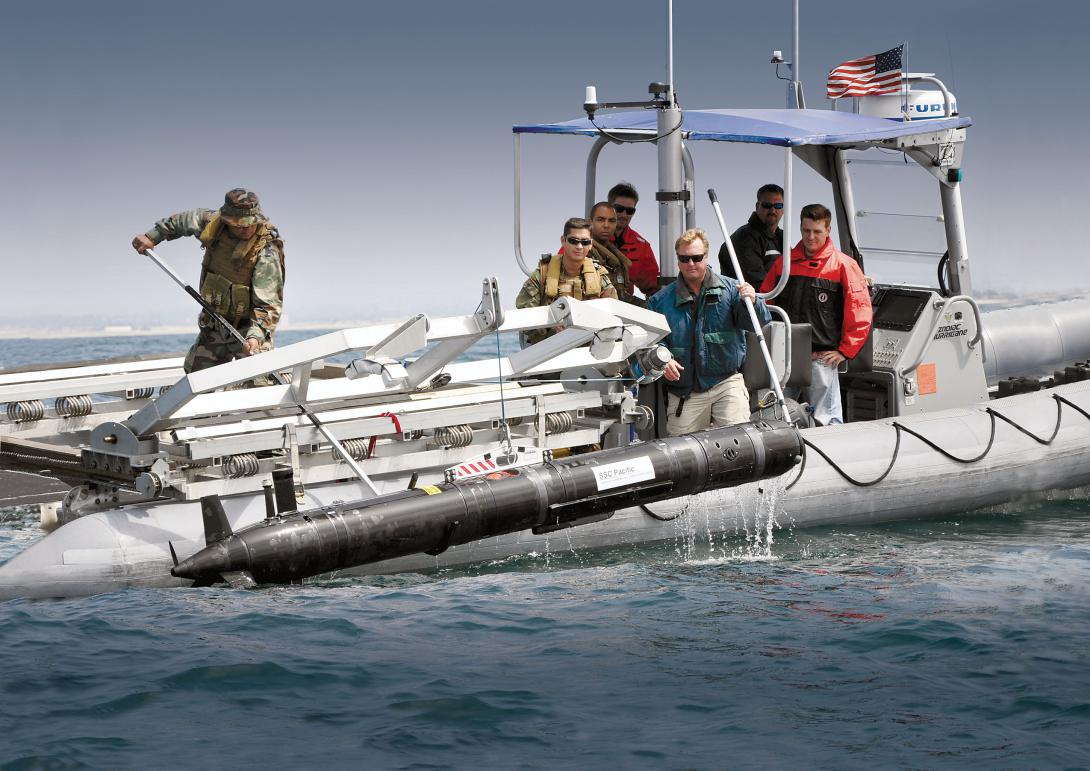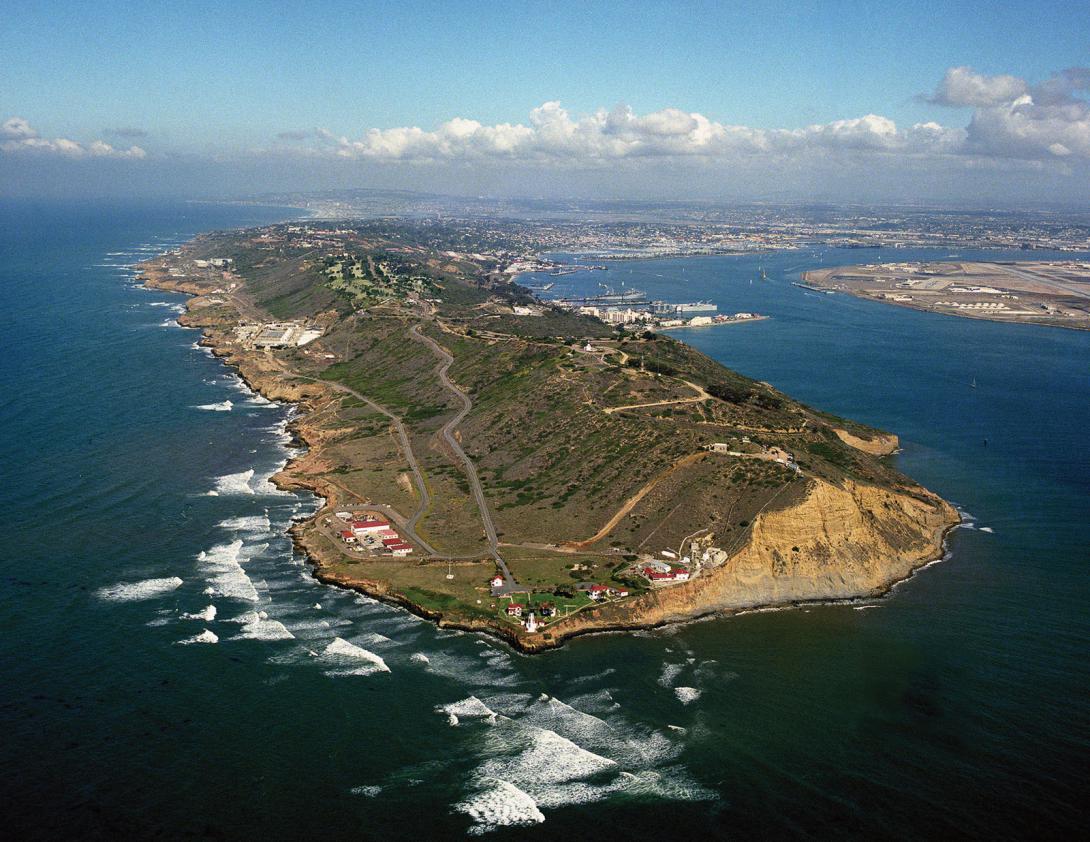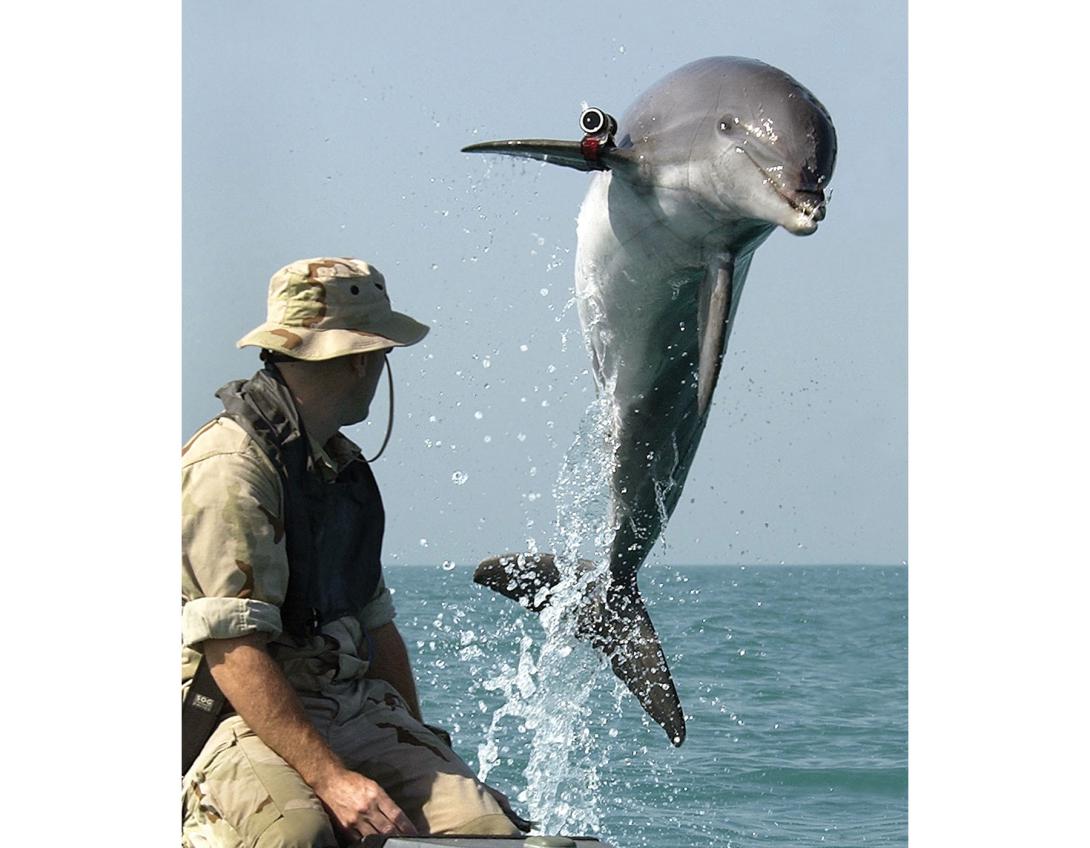Performing Open-Heart Surgery on Pacific Fleet Systems
As the U.S. Navy modernizes information systems across the fleet, one organization is responsible for researching, developing and fielding the full range of technologies in the Asia-Pacific region, providing complete life cycle development and support for systems, from concept to fielded capability.
The Space and Naval Warfare Systems Command (SPAWAR) Systems Center (SSC) Pacific could be referred to as a do-it-all naval organization for the Pacific region. The center’s workforce of about 4,000 includes scientists, engineers and other professionals. Those personnel conduct basic research and prototype development through systems engineering and integration to life cycle support of fielded systems. Areas of expertise include a wide array of command, control, communications, computers, intelligence, surveillance and reconnaissance (C4ISR) systems, such as cyber engineering, unmanned systems, afloat networks and submarine communications. “We are really an Asia-focused enterprise here. We also support many allies and coalition partners with C4ISR systems as well. It’s a tremendous effort that aligns well with the Pacific pivot,” explains Capt. Kurt Rothenhaus, USN, SSC Pacific commander. “Our long-standing presence and activities in Hawaii, Guam and Japan underlie our Pacific focus. Our work and expertise extend to our allies and coalition partners in the theater.”
The SSC Pacific team is responsible for integrating new systems onto Pacific fleet vessels through the Consolidated Afloat Networks and Enterprise Services (CANES) program. CANES is a massive effort to consolidate five legacy networks into one, which Navy officials say will enhance operational effectiveness. SPAWAR recently selected five vendors to compete for task orders to build and deliver CANES.
And SSC Pacific is reaching milestones on CANES as well. “We’re finishing up the installation on the USS John C. Stennis, and we just started the USS Ronald Reagan, two big carriers out here in the Pacific,” Capt. Rothenhaus reports. “CANES is a critical capability throughout the fleet. It comes with world class tactical software applications installed. It’s the most comprehensive computing and network modernization in our fleet’s history.”
At the same time, SSC Pacific is supporting forces in the region by integrating the Navy Multiband Terminal (NMT) system. NMT is the next-generation maritime military satellite communications terminal for the Navy and coalition partners. The system is considered an integral part of the Navy’s joint satellite communications terminal suite, and it is interoperable with legacy terminals. The NMT has variants for surface ships, submarines and shore sites.
In addition, ships in the region—and across the Navy—are receiving the Ship’s Signal Exploitation Equipment (SSEE) system increment E. SSEE is a cryptologic system that performs real-time signals intelligence analysis and provides precise geolocation across a range of targets. It performs all processing functions necessary to acquire, identify, locate and analyze signals. It also includes a subsystem that performs mission management and analysis.
Furthermore, SSC Pacific is installing the Host Based Security System, a flexible, commercial off-the-shelf-based application. The system monitors, detects and counters known cyber threats. The plan is to attach the solution to each server, desktop and laptop in the Defense Department. The system will be managed by local administrators and configured to address known exploit traffic using an intrusion prevention system and host firewall. “One of the things we’ve been focusing on via our installation management office is the comprehensive C4ISR modernization we are conducting throughout the Pacific area of responsibility. We really are installing a tremendous amount of capability right now out in the fleet,” the captain says.
He likens the ship modernization effort to life-saving surgery. “Sometimes with the installation folks, I’ll joke with them that they really are doing C4ISR open-heart surgery on our ships and submarines,” he says. “They’re coming in with brand new clients, brand new physical infrastructure, new servers and new antennas. It’s really very comprehensive.” It is not a perfect metaphor, he adds, because the U.S. Pacific fleet is not in crisis.
He cites two major reasons that the modernization is necessary. “We need to do it because the cyber threat is growing. We need to keep pace with that. And the demand for computer resources is growing, so that’s a big part of our focus area,” he states.
Modernizing C4ISR systems in the Pacific is critical because potential adversaries in the region are armed with more sophisticated systems than the United States and coalition allies have faced in recent conflicts. “One of the challenges we have at SSC Pacific, and really the Navy in general, is maintaining that technological edge out there. Our mission is to provide technology to the fleet and joint customer,” Capt. Rothenhaus says. “One of the unique challenges in this area of responsibility is the ability to operate in a battlespace where adversaries may be able to deny our use of the electromagnetic spectrum. Certainly that’s something that’s on our radar.”
And maintaining an edge in the C4ISR realm can be especially challenging. “That’s harder because of the ubiquitous nature of the technology field. A lot of times we leverage commercial systems and services available to many, so maintaining that edge is even harder in the C4ISR domain,” he asserts.
Ballistic missile defense also is a critical need in the Asia-Pacific region. The systems center has a ballistic missile test bed in San Diego that is tied to fleet systems. The test bed supports the Missile Defense Agency by training crews, certifying ship systems and testing national-level capabilities. SSC Pacific has supported the execution of more than 100 missions during the last decade. The organization also has contributed to ballistic missile defense system architectures, mission execution and analysis for the Missile Defense Agency and the ballistic missile defense warfighter, according to Navy documentation. “It’s critical national defense work, and it’s key in the Pacific region. That work goes on around the clock,” Capt. Rothenhaus reports.
He touts the organization’s broad range of products and services. “Some of the technologies we’re delivering and working hard on include antenna designs based on new materials, future use of autonomous systems and the command and control of autonomous systems to provide persistent and pervasive ISR coverage on the sea, under the sea and above it,” he says.
The captain adds that SSC Pacific supports the program management office for the Kingfish and Swordfish autonomous vehicle programs. The systems conduct countermine operations in shallow waters, which is “one of the toughest domains to do mine hunting in,” he says, adding that the programs align well with the Navy leadership’s designation of the undersea domain as a top priority.
He also describes SSC Pacific as a leader in future alternative energy sources for sensors. “We have projects that look at harvesting energy from microbial fuel cells to enable those sensors to continue to operate. We’re also leaders in tactical software system development. We’re working on systems to operate in those challenging battlespace environments where we might have an adversary who has an ability to jam or to deny us access to the electromagnetic spectrum. That’s a big focus area for us moving forward,” Capt. Rothenhaus states.
Locating mines in shallow waters also is the goal for the Navy Marine Mammal Program led by SSC Pacific. The program trains sea mammals, such as dolphins and sea lions, to search for mines in littoral areas, much like trained dogs search for explosives in airports.
The organization also serves as a high-performance computing center and conducts big data analysis. Furthermore, personnel are highly trained in information assurance and cyber, he points out. “I view cyber as having both a home and an away game for SSC Pacific. The home game is about making the systems that we develop and directly support more secure and agile, building cyber from the ground up when we design systems and innovating faster than the adversary,” he offers.
“The away game has to do with extending the reach and reliability of fleet C4ISR systems so that they perform in whatever environment, in whatever domain, no matter how afar from our shores those might be. Cyber is built into everything we do, all the systems we design, all the systems we build.” He reports that SSC Pacific has been asked to provide expertise to the rest of the Navy enterprise on cyber.
Capt. Rothenhaus emphasizes the need for innovation from both a technology and business perspective. “SSC Pacific has been home to many ‘intrapraneurs,’ those folks who work within a framework such as the Navy or SSC Pacific to find neat disruptive technologies for good,” he says. “There isn’t a day that I haven’t said, ‘Wow,’ seeing the amazing things that are done here.”







Comments